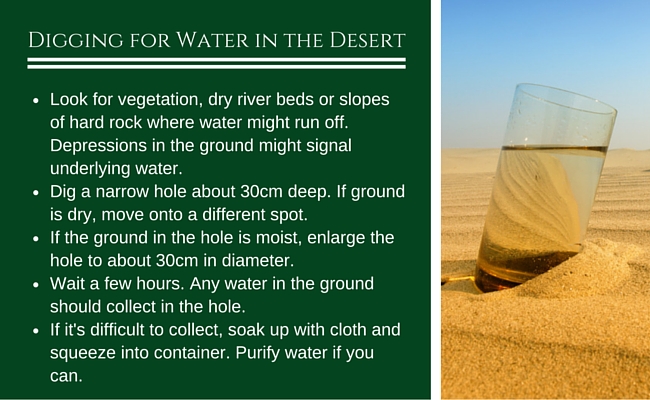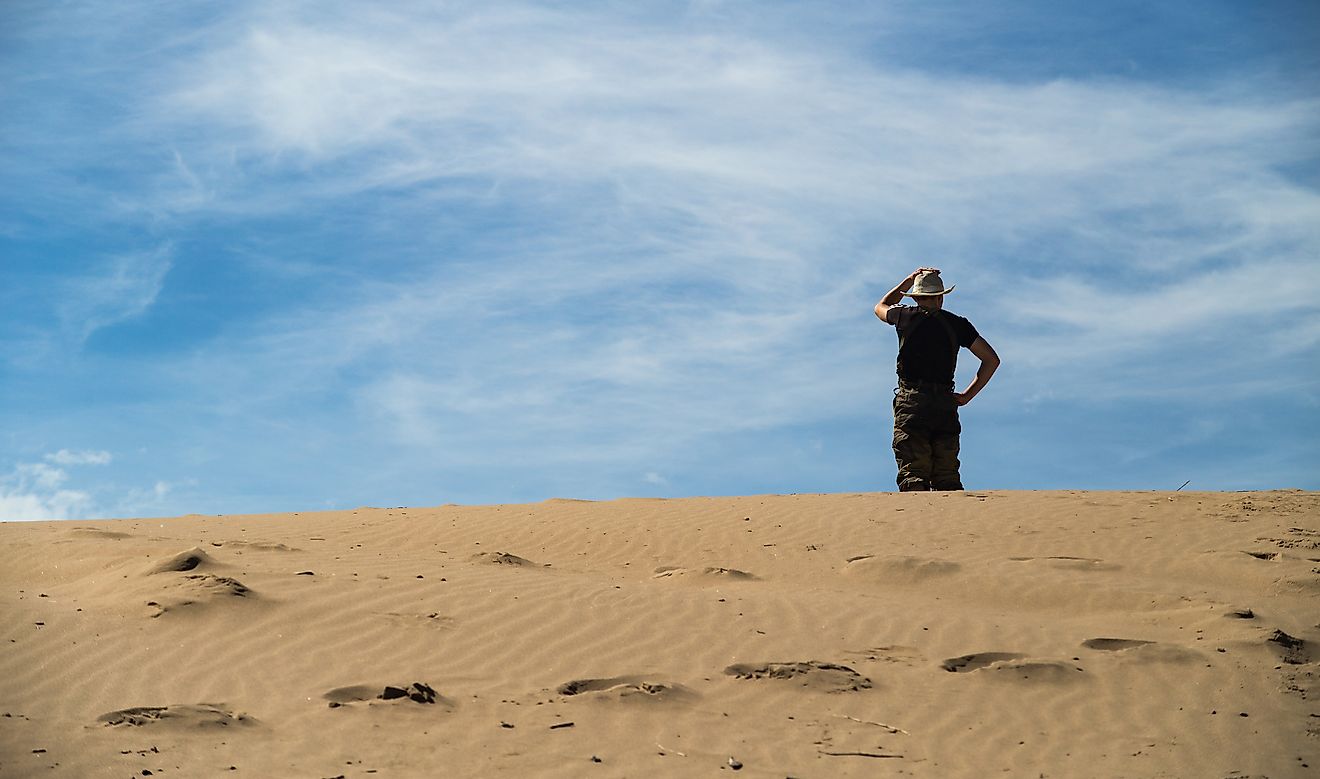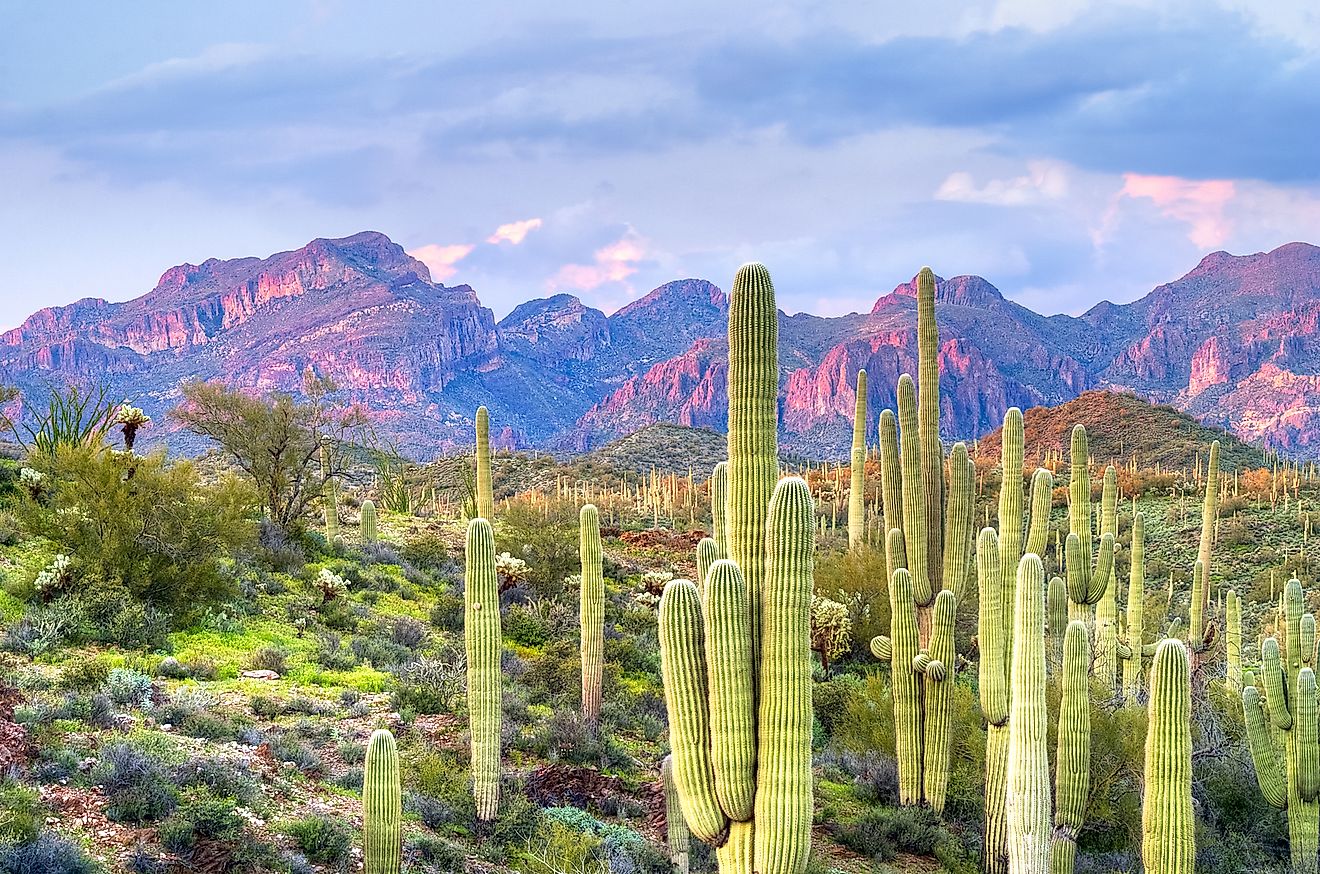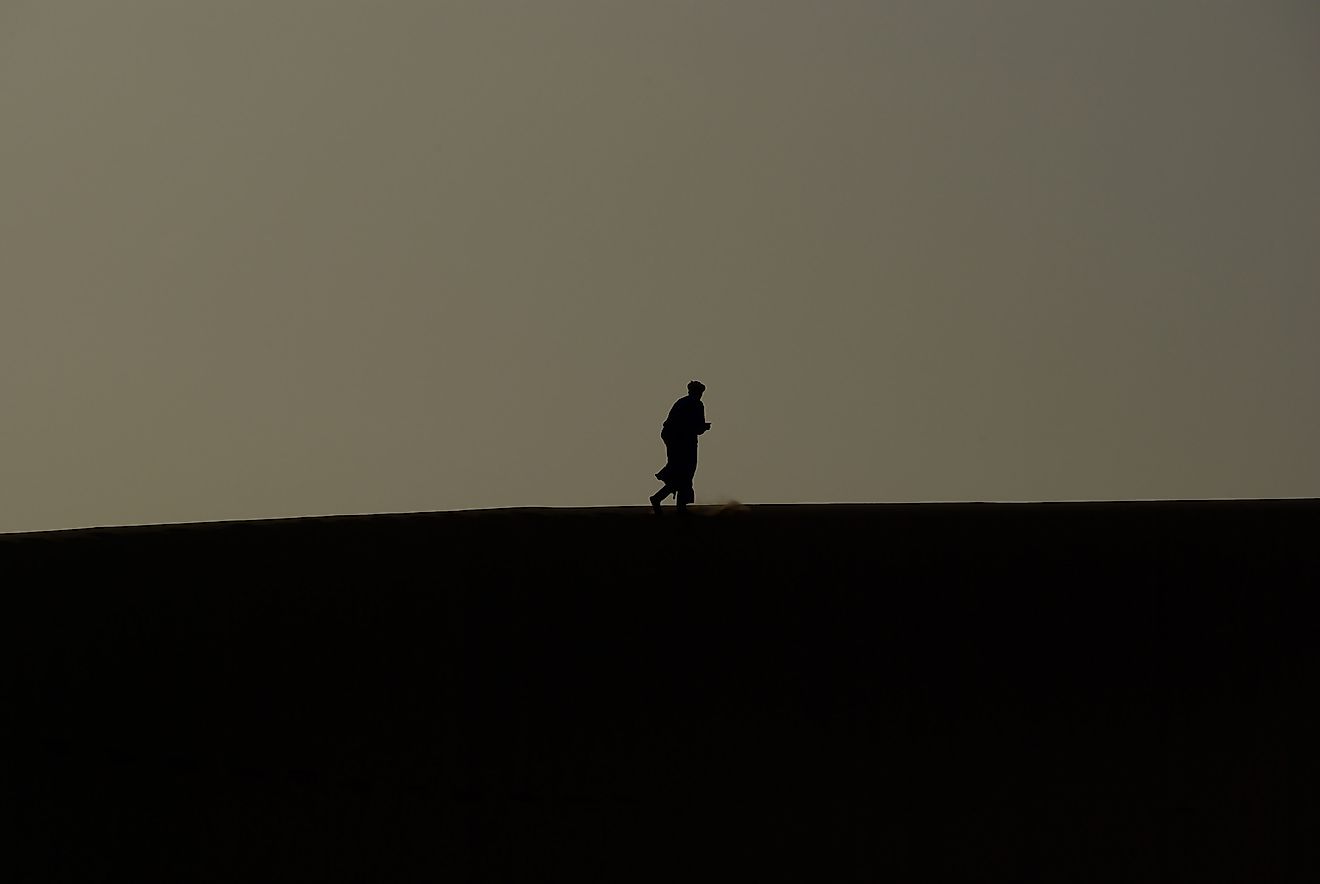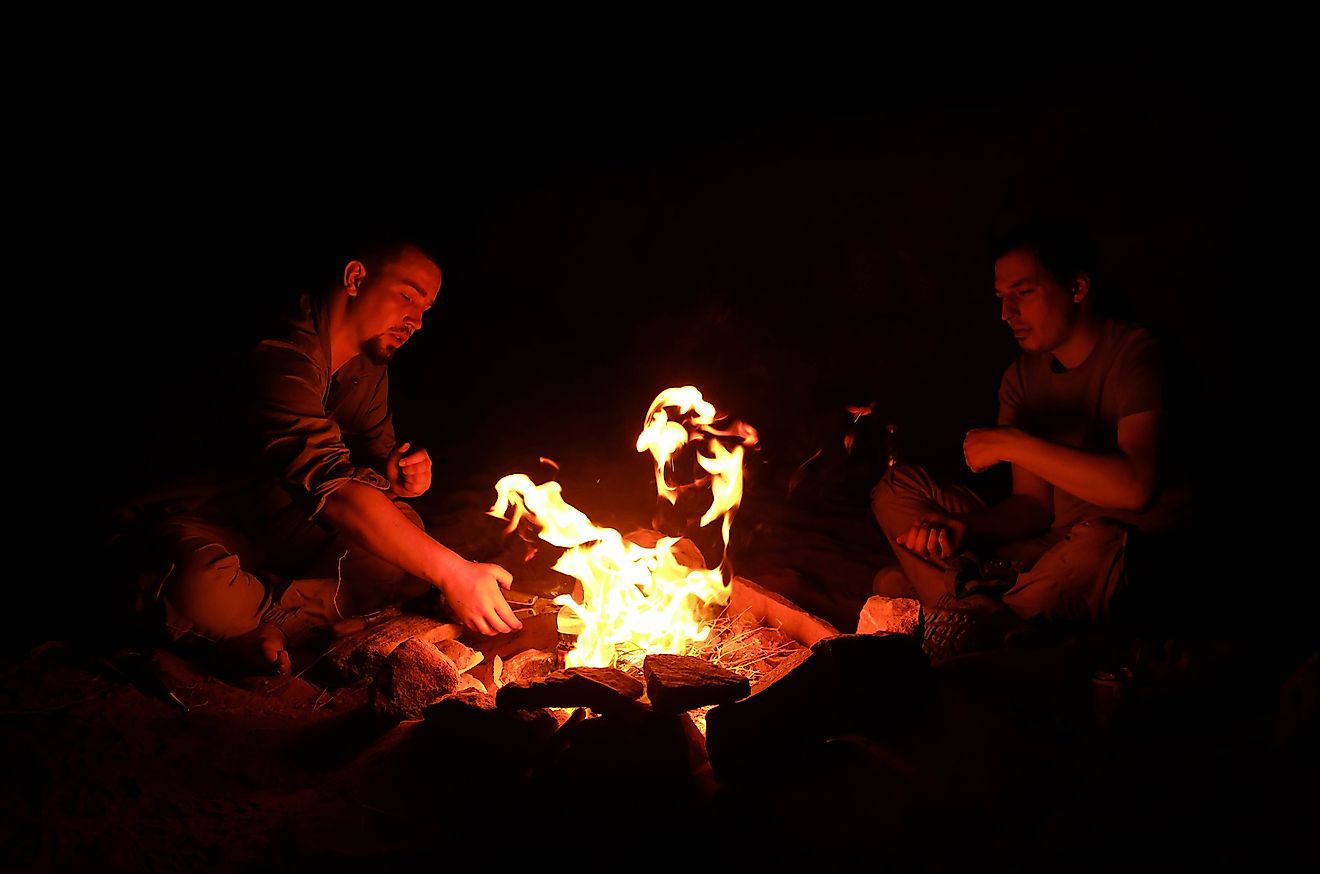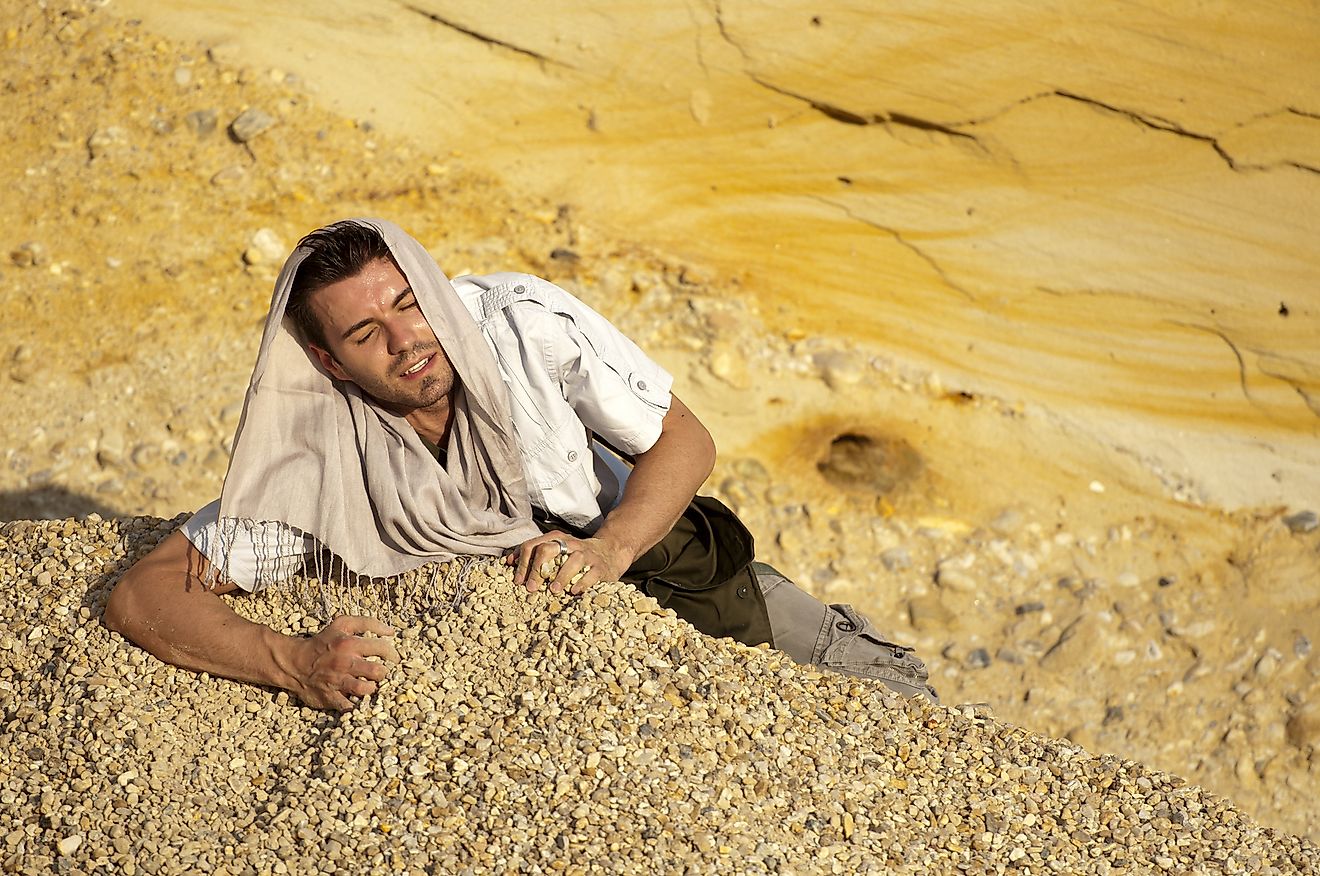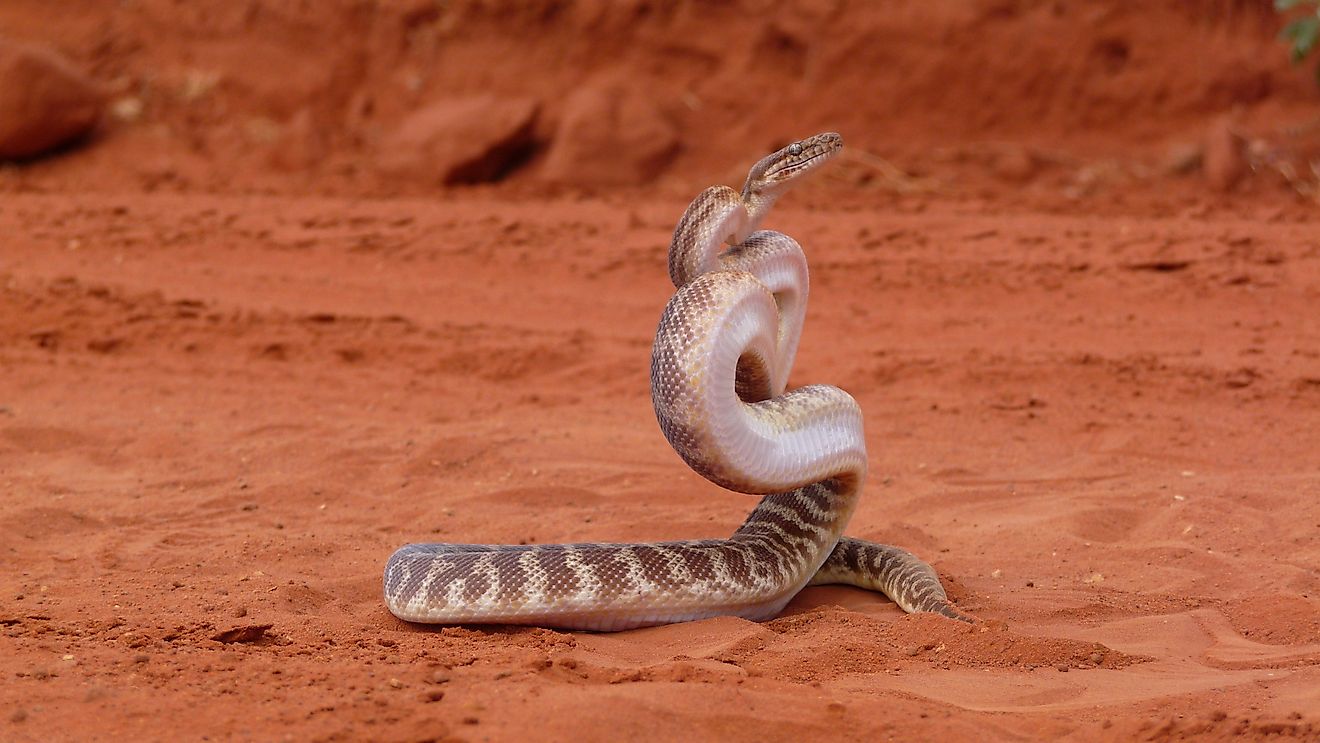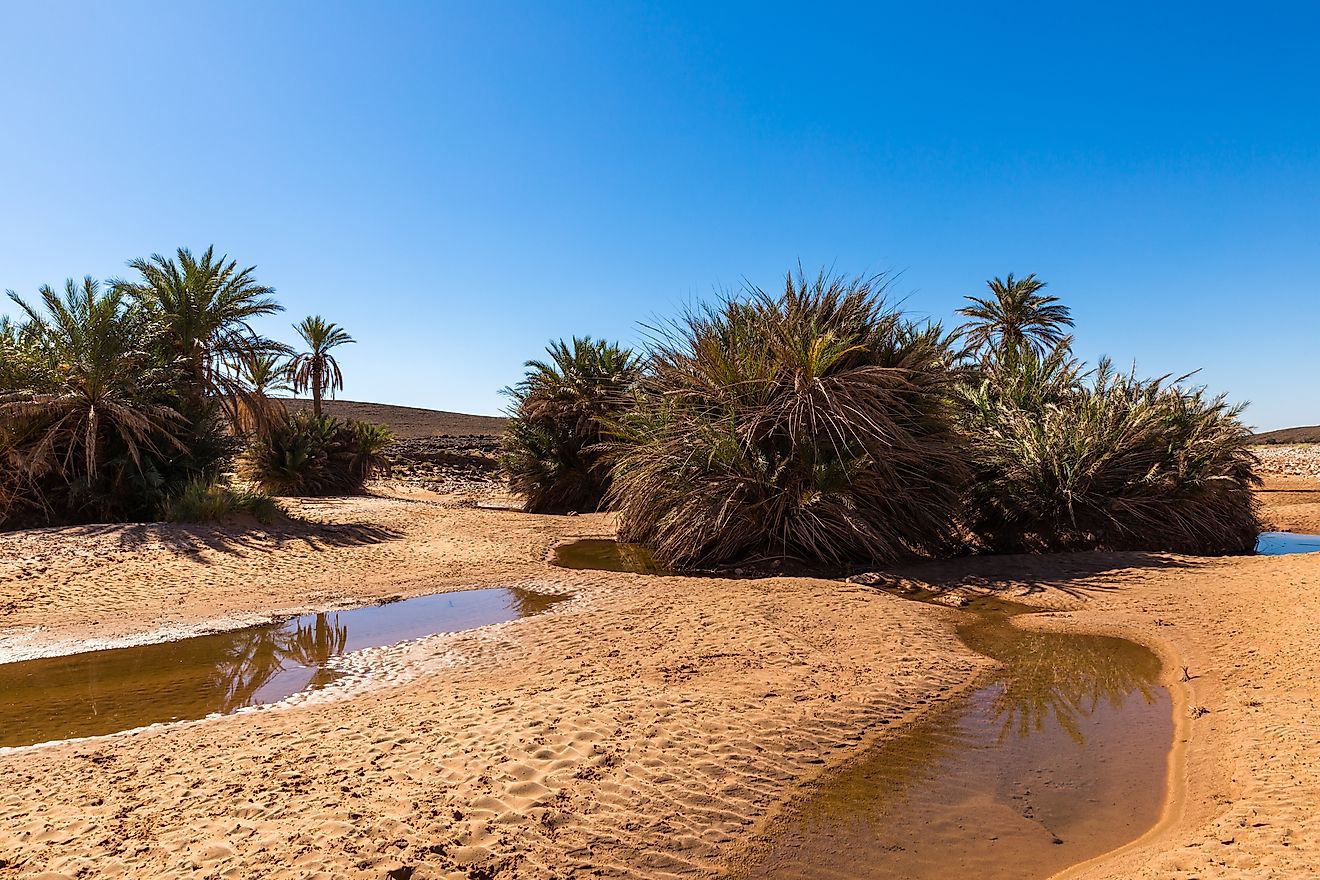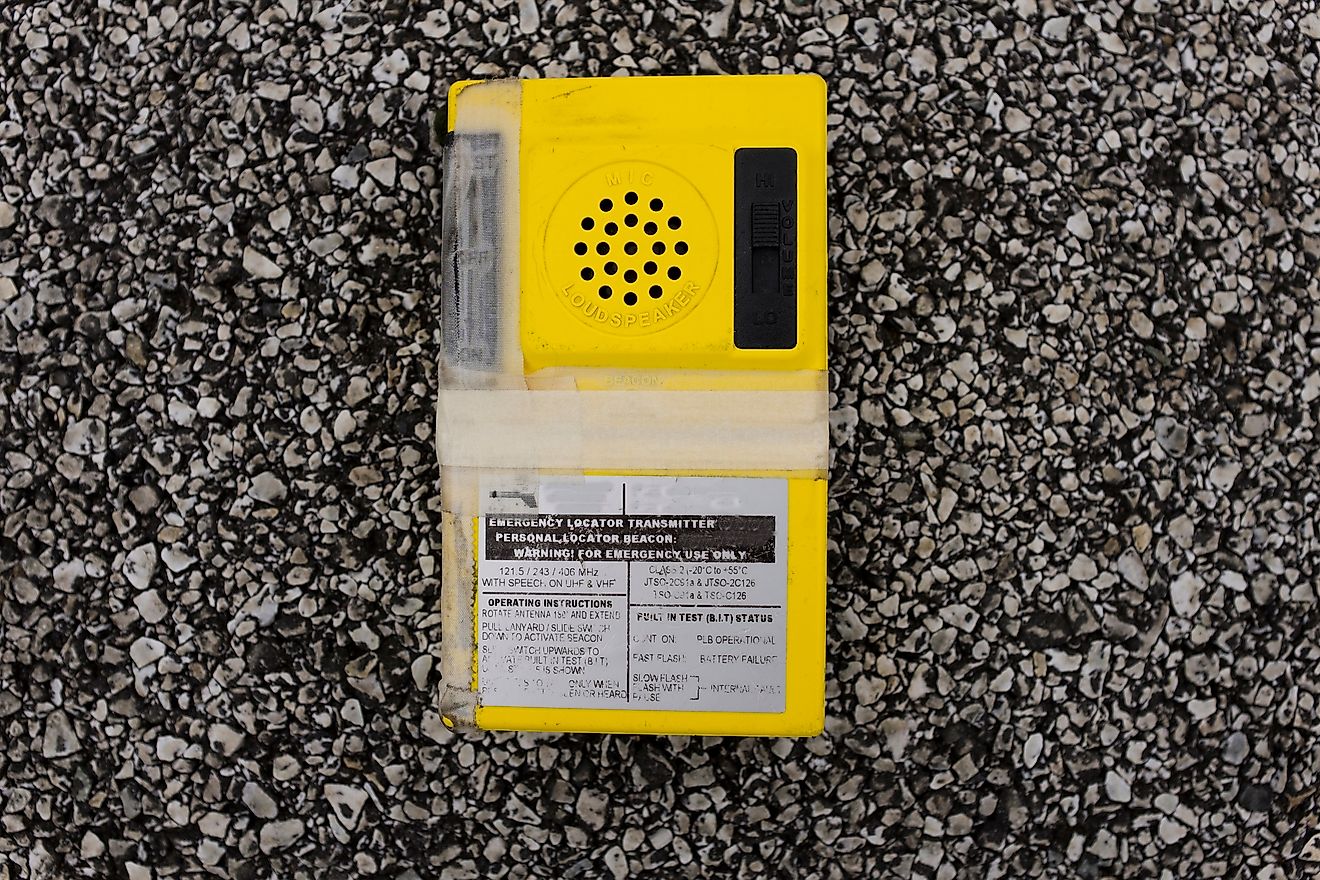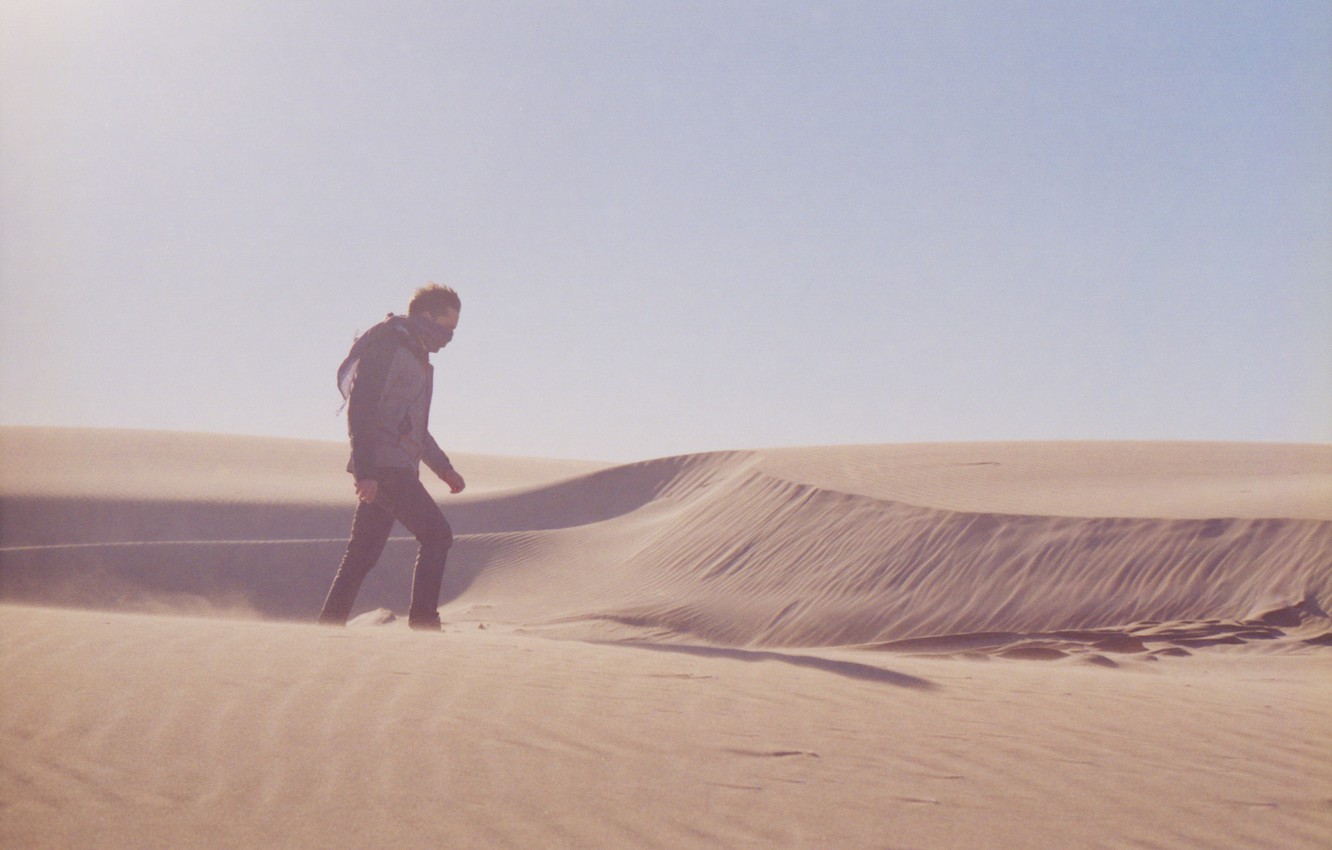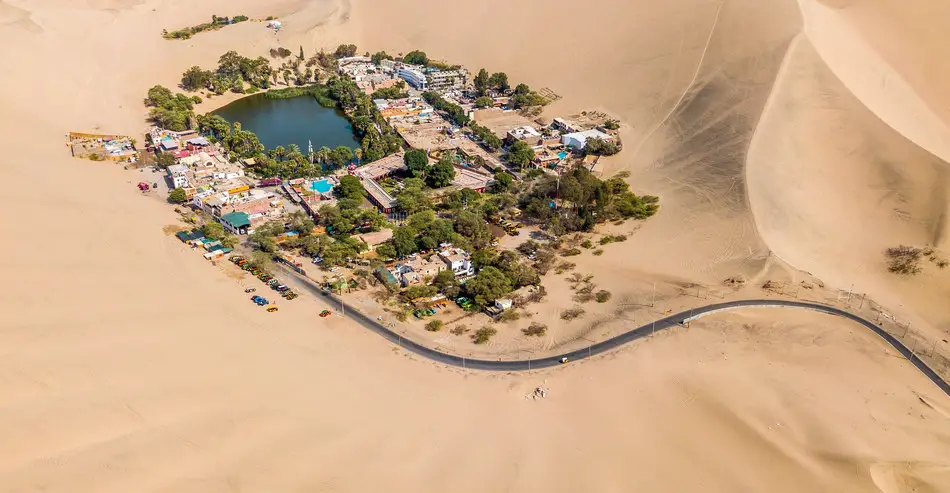How to survive in the desert
How to survive in the desert
How to survive in the desert
Вы услышите пять высказываний. Установите соответствие между высказываниями каждого говорящего A–E и утверждениями, данными в списке 1–6. Используйте каждое утверждение из списка 1–6 только один раз. В задании есть одно лишнее утверждение. вы услышите запись дважды. Занесите свои ответы в таблицу.
Воспользуйтесь плеером, чтобы прослушать запись.
1. The speaker explains how to survive in the desert.
2. The speaker talks about a traditional means of desert transportation.
3. The speaker describes the animals of the desert.
4. The speaker says that the desert is in danger.
5. The speaker explains how to find water in the desert.
6. The speaker believes that the desert is a beautiful place.
| Говорящий | A | B | C | D | E |
| Утверждение |
Вы готовите тематическую радиопередачу с высказываниями пяти разных людей, обозначенных буквами А, В, С, D, Е. Подберите к каждому высказыванию соответствующую его содержанию рубрику из списка 1–6. Используйте каждую рубрику из списка только один раз. В списке есть одна лишняя рубрика. Вы услышите запись дважды.
Воспользуйтесь плеером, чтобы прослушать запись.
1. How to survive in the desert.
2. Traditional means of desert transportation.
3. Animals of the desert.
4. Desert is in danger.
5. How to find water in the desert.
6. Desert is a beautiful place.
| Говорящий | A | B | C | D | E |
| Утверждение |
Speaker A. Travelling through deserts has always been a life-threatening activity but people had to do it for trade and exploration. In the old days, trade was conducted by caravans of camels. The camel was chosen because it is able to carry heavy loads and do without water for several days. The load was usually divided into two parts and attached to the camel’s back. Nowadays there are high speed roads crossing deserts in different directions but native people still rely on camels.
Speaker В. The desert is often associated with dead land, but it’s not. I’m a geologist and I can say it’s a fascinating place! Blue sky and endless sand dunes look fantastic! The sand is usually bright yellow but there are other colours, too. In Egypt, for example, there’s The White Desert — the sand is absolutely white and looks like glittering snow. The poor deserts plants deserve all my admiration — for their strength and will to live.
Speaker С. At first sight the desert seems uninhabited but if you stay there longer, you’ll see that it’s home to many creatures. Reptiles seem to be quite happy there — it’s their world. There’re lots of them but they usually hide in the sand and are difficult to see. Some lizards and snakes also have camouflage or change their colour to blend in with the surroundings. Their main food is scorpions, spiders, insects, small mice and rats.
Speaker D. The burning sun of the desert can kill a careless traveller in several hours. That’s why if you get lost, don’t panic but find a shelter and wait for help. Remember that walking will make you feel very tired and thirsty, so it’s better to stay where you are. Draw large signs on the sand or fix a bright piece of clothing on a tall cactus so that your sign can be seen from the air — the rescue plane will be able to find you sooner.
Speaker E. The desert is a dangerous place and people should be careful when travelling through it. Everyone knows this. However, we often forget that the desert can be damaged, too — some people’s activities are very harmful to it. Deserts are becoming polluted as people use them as dumping grounds for rubbish and industrial waste. Off-road desert car races ruin the delicate soil layer and kill plants that take a very long time to grow. Animals hiding in the sand may be killed too.
A−2: The camel was chosen because it is able to carry heavy loads and do without water for several days. The load was usually divided into two parts and attached to the camel’s back.
B−6: The desert is often associated with dead land, but it’s not. I’m a geologist and I can say it’s a fascinating place!
C−3: Some lizards and snakes also have camouflage or change their colour to blend in with the surroundings. Their main food is scorpions, spiders, insects, small mice and rats.
D−1: Remember that walking will make you feel very tired and thirsty, so it’s better to stay where you are.
E−4: The desert is a dangerous place and people should be careful when travelling through it. Everyone knows this.
How to Survive in the Desert: A Guide That Could Save Your Life
Whilst we don’t want you to go off wandering in the desert and get lost, we also would never discourage anyone from seeing everything the world has to offer and trekking off the beaten track a little.
On the off-chance you find yourself stranded, here are some essential tips on how to survive in the desert.
Planning is everything
Don’t just go off wandering aimlessly or you’re more than likely going to end up in the middle of nowhere. Plan when and where you’re going to, how you’re going to get there and back, where you’re going to be staying and do so in meticulous detail. Part of the attraction of adventuring is not having a plan, but the desert really isn’t a place you want to get lost.
Take the right survival gear
Hopefully you won’t need it, but take some survival gear with you just in case. You’ll need:
Tell people where you’re going
Once you’ve made your plans, make sure people know about them. Tell them where you plan to be and when so that they can track of where you should be. Should you not turn up then someone can start to do something about it. You won’t be able to rely on GPS or mobile phone signal in the desert, so don’t presume you will just be able to call if you get lost.
Keep covered
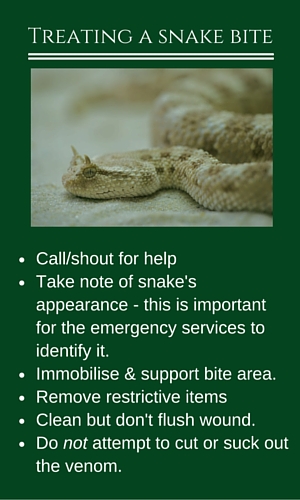
Light coloured clothing is better for reflecting heat, although darker clothing better protects against UV rays. If you can, wear light coloured clothing that has built-in Ultraviolet Protection Factor (UPF).
Of course you should also wear sunglasses or goggles to protect your eyes from sunlight.
You may be tempted to remove clothing to keep cool, but you must keep covered.
Take plenty of water with you
Naturally, you’re going to need a fair bit of water. When walking in sunlight and temperatures of 40 degrees celsius, the average person loses 900ml of sweat every hour. Try and split any fluids across as many water carriers as you can to minimise leakage and store out of direct sunlight if you can.
Pack the right foods but don’t eat it
Well you can eat it, but do so sparingly. The more you eat, the thirstier you’ll get, so only eat what you need to keep hunger at bay. You also need to make sure you pack the right food or you could end up doing more harm than good. Pack foods that are full of nutrients but don’t take up much space.
 Travel at night if you can
Travel at night if you can
If you have to walk through the desert, only try and do so during the night if you can. This will reduce the chances of you becoming dehydrated, and will save your body around three litres of water per day.
During the day, you should try and stay in any shelter you have to stay away from the hot sun. If you don’t have shelter, try and make your own using any sticks/poles and material to form a shady place.
Be prepared for chilly nights
Even though desert environments are hot during the day, they can also get incredibly cold at night. Therefore, if you can, pack some warmer clothing for when the temperature drops. Doing any walking you have to do during the night will also help to keep warm.
Should you stay or should you go?
An important decision to make is whether to stay in one sport or whether to move on. If you have shelter and a supply of water then you might be best staying where you are, especially if someone knows where you are, although if you run out of water then you’ll need to try and find a source from somewhere.
Signal for help
If you have the necessary equipment, you can try signalling for help. Building a fire will send smoke into the air, whilst using a pocket mirror can reflect sunlight to attract attention. It might sound like something from a film, but even spelling out ‘SOS’ or ‘HELP’ in sticks or rocks is better than nothing.
Finding water in the desert
If you run out of water in the desert, then it’s imperative you find a source as soon as possible. Here are some tips on how to find water in the desert…
Take water purification tablets with you. Water that you do find may well not be safe to drink and could make you ill. If you don’t have any tablets, drink the water anyway, as dehydration will affect you much faster.
Beware of dangerous animals
Obviously you’re not going to want to engage animals that could cause you harm, so stay away from any animals you see, and follow at a safe distance if they’re heading towards water. Be careful putting your hands under or into rocks as there may be spiders, scorpions or snakes hiding there.
Try and stay calm
If you panic then you won’t be in a clear frame of mind to think what to do, and you’ll also waste energy. It can be tricky, but try to stay calm.
10 Ways To Survive Being Lost In A Desert
Hiking in the desert can be a great way to spend an afternoon. However, one wrong turn could leave you stranded with nothing but endless sand and relentless sun. If you realize you have gone off-course and do not know how to get back to your route, it is important to remember how to survive being lost in a desert. Read on below to find out 10 top tips.
10. Tell someone where you are going
This is a simple but extremely important tip. Tell a family member or friend where you are going, how long you will be going for, and what time you expect to be home. If you end up getting lost, you will not be lost for long as they will be able to alert the authorities quickly, who will know where to look for you.
9. Do not drink cactus juice
Image credit: Anton Foltin/Shutterstock.com
It is a myth that cacti contain water, so do not cut open a cactus and drink its juice if you get lost in the desert. Drinking cactus juice will make you extremely ill; it will cause vomiting and diarrhea, which will exacerbate dehydration. There are some cacti that can be eaten, but you will need to have thoroughly researched this beforehand; do not eat unknown plants as they can be deadly.
8. Find shade
Image credit: Pics by Nick/Shutterstock.com
Avoid sunstroke and conserve your energy by staying out of the sun from 10am to 5pm. If you find a cave, approach it with caution as it may be inhabited by animals. If you cannot find a patch of shade, you can make one. Ideally, you will have a survival kit with survival equipment. If you have an emergency blanket and cords, you can fashion a shelter between a pair of objects.
7. Travel at night
Image credit: Aguminus/Shutterstock.com
As the night time is a lot cooler than the day, traveling at night will reduce the risk of dehydration. You can use this time to search for water or build a fire that will keep you warm and serve as a rescue signal. If you find a source of water, the fire will allow you to purify it and make it safe for drinking.
6. Conserve your food
Image credit: Winston Springwater/Shutterstock.com
Human beings can survive a lot longer without food than without water so save your food until you really need it. Eating increases thirst and if you are short on water, then it is better to hold off on eating as water is more important. If you do have to eat, only have a small amount to subside hunger pains.
5. Do not remove your clothes
Image credit: Pred.Pop/Shutterstock.com
This may seem counter-intuitive, especially in high temperatures, but keeping covered up may save your life. Keeping covered will protect you from sunburn and will stop sweat from evaporating – less water loss will slow down dehydration and keep you alive for longer.
4. Beware of animals
A Stimson’s Python strikes a defensive pose in the Australian outback. Image credit: Chris Watson/Shutterstock.com
If you happen across a group of animals, it may be a good idea to follow them as they could lead you to a water source. However, it is best to keep your distance to ensure they do not harm you. Be careful when lifting rocks as poisonous insects may be underneath them.
3. Stay calm
Panicking is the last thing you would like to do in a desert. Image credit: Everydaytextures/Shutterstock.com
If you realize you are lost, do not panic as panicking could worsen your situation. Remain calm and assess your surroundings, you may not have strayed far from your original route; taking a moment to think may get you back on track. If you find that you are extremely lost, then it is important to make survival your priority, and thinking rationally will help this.
2. Look for water
Water is one of the rarest resources in a desert. Image credit: Mikhail Priakhin/Shutterstock.com
Some deserts experience rainstorms, and if one had taken place recently, you should be able to find small pools of water between rocks or on the surfaces of flat stones. If you notice animals’ tracks leading downhill, it may be an indication that a watering hole is nearby. However, it is most likely you will need to dig for groundwater. Groundwater tends to collect at the foot of mountains or large rocks; dig a hole at the point where the rock slopes beneath the surface. Keep an eye out for vegetation with large, green leaves as they require a lot of water, so it may indicate a source of water is nearby.
1. Personal Locator Beacon
Image credit: depaz/Shutterstock.com
The best way to ensure survival after getting lost in a desert is by carrying a personal locator beacon. This hand-held device sends out an emergency signal via satellite which is then received by Rescue Control Center, who will be able to see your location and send out a search team to rescue you. The devices are to be used in emergencies only and can be quite expensive but to ensure your safety is worth every cent.
How to Survive in the Desert
Find food, water and shelter in scorching desert temperatures. Locate hidden spring water and underground rivers. Learn the secrets of desert nomads and American Desert Indians from centuries past. How to hunt, trap, and find desert wild edibles and even insects. Ready to survive in the desert? This just might save your life.
Surviving in the Desert calls for knowledge and preparation — the knowledge of what it takes to find water in the desert as well as what desert survival supplies to have on hand and which ones to make — if you have no survival supplies on hand.
In many deserts day time temperatures can soar over a hundred degrees and even beyond the 120 degree mark.
Evening temperatures in some deserts — especially in the United States — can plummet to the forties or just above freezing. If the heat doesn’t kill you in the desert during the day, the cold that night will.
How To Survive In The Desert
Finding Water In The Desert
Even if you’ve never been to the desert, realize that two conditions exist that might drop you in to dangerous desert conditions one day unexpectedly:
1) You might be in a commercial airline that crash lands in the middle of a desert with hundreds of people on board and minimal food and water and no communications.
2) You might have to evacuate a region of the country that has been struck by a catastrophic disaster, a disaster so massive that it knocks out infrastructure, highways and bridges, as well as electricity and now your only way out is following designated evacuation routes on foot.
It’s very possible you could end up in a desert survival situation one day. Several million people live in the American southwest states — specifically California, Arizona, and Nevada — they are surrounded by deserts. Several million more people live in the State of Texas — another state with vast stretches of desert.
If America ever suffers a widespread disaster, perhaps in the same way Japan experienced it’s recent tsunami in 2011 (and meltdown of the Fukushima nuclear power plant), causing the death of several thousand people and the evacuation of countless more people — a large number of Americans may find themselves one day evacuating across a hot, dry barren wilderness area, stretching hundreds of miles in every direction.
Surviving In The Desert: Step One Is Preparation
Clothing For The Desert
There’s a reason that sheiks in places like Saudi Arabia are known for wearing hoods and robes — the loose fitting clothing help keep a body cool, especially when walking and perspiring.
Though some sheiks are known for wearing white, the reality is that black robes make for the best clothing for traveling through a hot desert. Case in point: The Bedouin, a tribe of Arabic desert nomads, wear black.
Though the color white does reflect sunlight, it also reflects your body heat right back at your body. Black on the other hand absorbs sunlight, but it also absorbs your body heat.
In the end, with a loosely worn robe and hood, black overall is a better color to wear in the desert than white.
1) To prepare for a journey on foot across a desert, have a black robe on hand (preferably wool, see below), folded in your pack. Where do you get a black robe for an extreme survival scenario that takes you into a barren, hot desert? The same place that Arabs living in the U.S. do — Arabic stores and suppliers.
2) If conditions get hot, the desert too vast, put on this robe and survive. See: Summer Science: Clothes Keep You Cool, More Or Less. Though the author here points out that when a thick black Bedouin robe can’t be had, light-colored, light weight clothes are the second choice.
A trek on foot across a hot desert though is a lot like a trek across the Yukon or even Siberia in the dead of winter — it is dangerous, the weather and terrain can kill you if you’re not prepared. If you plan on crossing a desert, go out of your way to be prepared. Failure to properly plan may easily cost you your life.
Need more evidence that a black robe (worn correctly) is the right attire for the desert?
Consider this 2004 article in New Scientist that quotes author William McDonough, who researched and spent time with the Bedouin, as saying: “As a young person, I could not understand why the Bedouin wore all these layers of black clothing while it was 49 degrees C with no shade, nor why their tents were black. I was staying in a British white canvas tent, wearing shorts and khakis. Then I realised that the Bedouin were protecting themselves from ultraviolet.
They were holding in their moisture. The average Bedouin lives on a litre of water a day; I was living on 19 litres a day.”
Protecting From The Wind And Sand
In a time of high wind, sand and dust can be whipped up, making it nearly impossible to see. Your lips can become split and chapped and even your face chapped; sand and dust can fill your nose, making it difficult to breathe. The Bedouin pull their hoods forward, covering their faces. You can do that or simply use a shirt or bandanna as a loose covering for your face, leaving just a thin visor of space for your eyes to see from.
Ski goggles in your survival pack can play a secondary role in the desert — protecting from sand and dust, not just snowfall.
One final note about the Bedouin — they make their clothing from the wool of camels, sheep, and goats, common animals the Bedouin are known for. Pulled tightly to the body, wool clothing will help keep a person warm at night in the desert. During the day wool clothing must be worn loosely though, allowing air to flow and help keep a body cool during the daytime, especially when walking. See: Why Wool?
A survivalist in the American Southwest, preparing for a disaster, should consider that an evacuation on foot could one day occur. If this evacuation takes place in the summer months, desert temperatures could be near 130 degrees — an extreme yes, but still a possibility.
Piecing together an outfit (a wool black robe) for a possible desert exodus may prove to be a life-saver.
If a wool black robe seems like an extreme step, or you simply don’t have one on hand that day, wearing a loose fitting long sleeved shirt and pants and a wide brim hat with a crown might be the next best thing — and of course sun glasses to protect against the UV rays of the sun.
Things To Know About Water
One thing that’s interesting to note about the Bedouin — they’re capable of living off a single liter of water a day in the desert. Most likely their bodies have adapted as they’ve aged. For the rest of us not accustomed to life in harsh desert, our goal for water should be a gallon or more a day, in order to stay well hydrated and ward off heat stroke.
Tip: When you drink water in the desert, take a good, long drink. Reports indicate that people have been found dead in the desert, even with water in their canteens — it’s believed they sipped their water, rather than taken longer drinks. The problem with taking sips of water in hot temperatures is this — it’s not enough to hydrate your brain and internal organs, which leads to death.
Make Water A Priority
If you’re going to be any where near the desert, water is an absolute priority. Without proper planning, you may never make it out.
To find water in the desert, your best sources of fresh water are going to be streams and springs — though yes, they are going to be few and far between, perhaps impossible to find in vast stretches of desert. Any available streams may in fact be underground.
Water can be so sparse and deserts so hot and dry that you can die of thirst or heat stroke before ever finding a new location to replenish water.
Lakes, in the desert, may have high salt content — if you detect a salt-water taste, this is water that will need to be distilled first, to remove any salt.
(To learn how to distil water in a desert survival situation, see: How to Find Water in the Wilderness).
Survival In The Desert Calls For Research
Survival in the desert is a lot like survival in a remote area — be sure to do your research on any area you may one day find yourself in, before you embark. Talk to geologists, museums, ranchers and wildlife offices of people who know the area. Ask if they know if there are any underground springs or large bodies of water near the surface anywhere — and mark these down on your map — which areas of the desert do these underground rivers come closest to the surface of the land?
Study the terrain and vegetation on maps; notice lines of green vegetation that may signify a dry stream bed or that there is a shallow underground river.
A few deserts have major rivers that cut across, such as the Colorado River running through the Grand Canyon and into the Mojave Desert where it reaches in Nevada.
Know Where Water Can Be Found In The Desert
For example, though the Colorado River crosses through the eastern portion of the Mojave Desert, there is another river, the Mojave River, that can be a source of water — for those able to find it. Though it passes above ground near cities like Victorville, CA., other portions of the river are underground.
One researcher on the Mojave Desert writes: “The Mojave Road followed along the river from Soda dry lake to the Cajon Pass. Desert Indians used this as a trade route where water could easily be found on the way to and from the coast. Later, the Old Spanish Trail and Salt Lake Trail (Mormon Road/Trail) joined up with the river near where Daggett is today.” See: Finding water in the Mojave Desert
Historical Maps May Reveal Locations Of Water In The Desert
What we learn from the Desert Indians (Native Americans in the southwest United States) is that a path or road through the desert can be a lot like a path or road through the mountains — realize that indigenous people (like the Desert Indians crossing through the Mojave Desert) may have established routes and places marked on maps where water can be found.
Smugglers Know How To Find Water
“Coyotes” — smugglers who help aliens sneak into the United States across the Mexican border — are likely to provide information on water sources (sometimes good information, sometimes bad) beforehand. So, like a modern day Coyote, before you set out across a desert — or send other people across a desert — do your homework first. Find out where above ground streams are located, as well as where they travel underground. Find out where springs exist and even wells (that still operate).
Locate Routes Of Indigenous People
Where ever you are in the world, find out the routes that indigenous people from that area used to cross expanses of barren and dry desert or desert mountains, and get to know these desert routes well. See: Secrets of Ancient Bedouin Navigation and [DOC] Southern Paiute – Chemehuevi Trails Across the Mojave Desert
In a worst case scenario, remember what you learned above — if you’re on the ground and need to find water, study the terrain; look for areas of dark green vegetation; here you’re looking for a dry stream bed; follow that stream bed until it bends; look for water (in the ground) on the outside bend — that is where gravity would pull the most water when that stream was running above ground (following a rare rain, for example) and where an underground trickle may still exist.
Dig seeps, build solar stills and capture water from condensation sources. (To learn how to dig seeps, build solar stills, and other methods for finding water, see: How to Find Water in the Wilderness).
Early Morning Dew Provides Water
Another method to practice when it comes to finding water in the desert: Early in the morning, just before dawn, turn over half-buried rocks. As morning sets in, dew will collect. Be alert to dangers, such as scorpions, which live in a number of deserts, as well as dangerous snakes and spiders.
Turn over enough rocks and you may collect enough dew to get you by for the next few hours.
Dew can also collect on desert grass — run a towel or other cloth through the grass and once soaked through, squeeze drops of water into a water bottle. Collect as much as you can and squeeze from the towel into any containers that you have with you. You just might collect enough to get you through the next few hours — until you can find a spring, lake or stream.
Can You Drink Water From A Cactus?
Unless you know plants and cactus species well and — better yet received first-hand instruction from a desert survivalist — only look to cactus as a source of water as a last resort. Though certain species of cactus can store a generous amount of water in their stems, they often have high amounts of oxalic acid. Oxalic acid — specifically on an empty stomach — is a fast way to get diarrhea. See: Can You Get Potable Water From a Cactus?.
Most cactus fruits are edible — for example, the fruit of the saguaro cactus has been important to Native Americans in Northwest Mexico and the Southwest United States for many centuries. When it comes to wild edibles though, always know what you’re eating — we can’t say that enough.
Aim To Drink More Than A Gallon Of Water A Day In The Desert
In extreme temperatures the body can require more than a gallon of water a day. Desert people like the Bedouin shepherded animals to fresh pastures whenever grazing lands were exhausted. They moved frequently and yet survived in a harsh environment with little water to be found. Life required knowing where water could be found (for the Bedouin it was often wells that had been dug) and plotting routes based on water locations.
Finally, a large goat skin may have been all a Bedouin nomad had to carry water in.
Whatever you use to carry water in the desert, be sure it’s large enough to carry enough water to keep you hydrated until you can reach the next location to replenish water.
When it comes to finding water in the desert, the questions to ask are: How much water can I carry before setting out? What routes can I take and where does water exist along these routes?
When The Desert Is Too Hot Travel At Night, Build A Desert Shelter Early Morning
When the desert is just too hot during the day time, realize that it would be best to travel at night, when the temperature drops. To get through a hot day in the desert, at first light (early in the morning before the temperatures heat up) build a small desert shelter out of sticks, brush and even a tarp or bed sheet if you have it, capable of providing shade, leaving a small opening at the top and openings at the bottom for air to flow.
Space Blankets Reflect The Sun In The Desert
Carry a few emergency space blankets, that you will use as a “skin” for your shelter — reflecting the sun’s rays off of the shelter, helping it stay a few degrees cooler inside.
If you have to scavenge materials from your home, prior to an evacuation, grab a large roll of aluminum foil and duct tape — you can make your own reflective skin for a desert shelter when nothing else is handy.
Tip: Consider heavier duty space blankets. Many space blankets are thin, light-weight material that tears easily and usually only good for 1 or 2 uses. A heavier duty space blanket will be more versatile, allowing more use.
Note: Don’t use a space blanket as clothing. It will reflect heat in also; worn close to your body you will heat up in the desert (only do this in the evening hours when the temperatures drop).
Note: In Afghanistan, the Taliban has used space blankets at times to hide their heat signature from Nato forces.
Tip: If there’s no time to build a shelter when the sun is scorching the desert below, build a make-shift umbrella (like one you’d carry in the rain) out of a few thin, sturdy sticks, something to tie with, and a space blanket (this won’t work in high-winds). Use it to provide shade as you walk. Use light weight sticks so that you’re not carrying more “weight” — added weight will mean greater physical exertion, which you want to avoid when the temperatures are hot.
How To Build A Desert Shelter
Be aware that flash floods can take place in the desert, especially in the low lands. All it takes is a surprise rain in the nearby hills to create a flash flood. Build a shelter on a nearby hill. To minimize physical work, look for outcroppings, boulders, and ledges that will work as natural walls, where you only need to use a poncho or space blanket as a roof.
Watch out for dangerous insects and snakes.
Building A Desert Shelter For Extremely Hot Temperatures
Because this shelter is going to call for some digging, this is one you will have to build in the early hours of the morning, before physical exertion becomes dangerous.
1) Look for a shallow area in the ground, between two dunes for example.
2) Dig a space deep enough for you to lay in about two feet deep.
3) Pile the dirt or sand dug from the trench around the top edge of the trench.
4) Use four sticks as stakes, planted at the four corners of the trench. Tie a corner of your darkest covering (tarp, sheet, blanket) to each stake, so that it forms a flat roof, over the trench.
5) Be sure to leave a few inches of space between the top of the trench and the covering so that air can flow.
6) Using four taller stakes and a white sheet (for reflecting sunlight) or a space blanket, hang a second flat roof a few inches above the first flat roof. (If you have nothing to tie with, use piles of rocks to anchor down the corners of each layer of cover).
Done right, the physics of a trench desert shelter are reported to be several degrees cooler than a simple shelter that only supplies shade. The white sheet (top layer) reflects the sun, while the black cover (bottom layer) absorbs your body heat. Space between the two layers as well as between the bottom layer and the ground allow for air movement.
This is a shelter for extreme desert conditions — sometimes shade may be all you need instead. Sometimes though, especially in temperatures soaring over 100 degrees, you’ll want to put more thought and effort into your shelter, remembering to sleep during the day and travel at night.
Finding Food In The Desert
The hotter and more barren the desert — like the Sahara Desert in North Africa — the less likely it is that you’re going to find anything edible. Choose routes on maps that show the greatest amount of vegetation, as well as paths that follow or cross shallow crevices (you don’t want a route that passes deep crevices — those could turn out to be cliffs and canyons; make sure you know how to read elevation changes on a map before setting out across a desert you’re not familiar with).
By choosing routes that pass over shallow crevices and near dark green vegetation you’re increasing your chances of finding edible wildlife. In the desert that is likely to be snakes, reptiles, and scorpions, but in some areas could include rabbits and other small mammals and even birds and insects like ants and centipedes.
Tip: If you’re short on water, avoid eating food. Digestion will use up your body’s water stores — which you need right now to keep your brain and internal organs functioning.
Edible Insects In The Desert
Ants, scorpions, grasshoppers, centipedes and tarantulas are all edible and can be found in many desert areas. Many areas have one or more of each of these insects. For instructions on finding, catching, and eating insects, see: Top 10 Edible Insects in North America).
Edible Plants In The Desert
Unless you plan on surviving in the desert long term, your time will be better spent harvesting insects, snakes and other reptiles as you walk along, rather than count on a book knowledge of wild plants coming through for you in a desert survival situation.
Your goal should be to exit the desert — not suddenly try to survive in the desert long term — not without actual desert survival training where you would learn first-hand methods for identifying wild plants that are safe to eat as well as hunting and trapping methods.
The desert is simply an obstacle — there are more fertile lands to live off in the far off distance — lands with cooler temperatures, more sources of water, and larger game animals. If your goal is to live off the land long term, set your sights on these distant areas, which may be hundreds of miles north, east, or west if your journey is across a desert in the American Southwest.
For our Australian readers, that land of course may be to the south, depending on your location.
Eating Reptiles And Snakes
Always cook reptiles and snakes thoroughly before turning into a meal. Salmonella (bacteria) is common in reptiles, even on the skin. It can make you extremely sick and if you’re already dehydrated and in a survival situation, it may cost you your life. Always wash your hands after handling reptiles.
Catching Snakes
To catch a snake in the desert, find a long stick with an extra branch at the top. Break off that branch so that the stick you have now has a shallow “V” shape at the top. Use this long stick to pin down snakes, especially venomous snakes. See: Desert Snakes
Once pinned, cut off the head with a knife or simply crush it with a large rock.
Once removed from it’s body, bury the head of any snake you kill — a careless step in in the dirt and those fangs could still inject venom into your blood.
Study The Terrain To Find Wildlife
Due to the need for shade at times, look for lizards and snakes under large boulders, rocks, and other outcroppings. As mentioned above, you increase your odds of finding wildlife by looking in areas near green vegetation — because that is where snakes and reptiles are going to have their greatest odds of finding food.
Rabbits: Some desert areas will have rabbits (think jack rabbits) and other varmints. A coyote or Hawk or other predator may have caught an animal that you can turn into food. Any flesh they’re eating is likely to be fresh — chase away the predator and then cook the carcass thoroughly and you just got yourself a free dinner.
Rabbit holes may be found in areas of sage brush. Set fire to the sage brush — once it burns down, sit at the base of a rabbit hole with a short, thick stick, out of sight of any rabbit in the hole; club any rabbit as it exits.
Lizards, out in the open, can be killed with a swiftly thrown rock or “throwing stick”. Also, in the early morning hours, look for lizards under flat rocks. Pin it with a stick or kill it with a rock.
Snakes may be found and caught easiest with minimal risk when they’re sunbathing on a rock (the risk is greater when you have to look under rocks for snakes — they can catch you by surprise).
Preparing Food
Desert Soup: If you’re near a water source like a spring or river, dig a small pit and fill it with water. Heat up rocks in a fire and drop them in the pit to get the water boiling. Drop in insects, snakes, and any lizards you’ve caught. Cook thoroughly. (Insects can be eaten raw but from time to time may carry bacteria — if you have the means to cook them first, do so. Plus, they may taste better.)
Oven Baked Lizard, Insects or Snakes: Place insects, snakes, or lizards on a flat rock. Arrange a small pile of rocks around the flat rock. Place a larger flat rock over the top, creating a small box (that will work as an oven) with a partial opening where you can keep an eye on your food as it’s cooking. Build a fire next to this box (not in front of the open area) and check on it periodically — you want it to cook and blacken from the heat — you don’t want it to catch on fire.
Desert Weapons
Most animals you’ll turn into food in the desert don’t call for a high powered weapon: A good slingshot and steel pellets for ammunition will take down rabbits, lizards, birds and even snakes — if you’re a good shot.
Summary Of Desert Survival
Stay well-hydrated, preparing for your trip by having essentials supplies and maps and specific routes in mind.
Set out on this trip across the desert carrying more water than you’d typically carry into the wilderness (along with the appropriate bushcraft gear), knowing you’ll need a gallon of water a day or more in hot temperatures.
If you know exactly where water can be found as you cross the desert, you may be able to carry less water — which will mean less weight, and less physical exertion — like the Bedouin who know where wells are located in vast stretches of desert.
So do your homework — talk to people who know the desert, especially people who have researched the lives of indigenous people in your region of the country (like the Desert Indians in the American Southwest) and find out what routes they traveled, where they found water, and also where water can be found today. As a caution, the sources of water that existed just a few centuries ago could be vastly different today.
Talk to farmers and ranchers in the area — they may have spent some time in the desert and may know about water sources — springs, wells, caves, and underground rivers — that aren’t known by other locals. Mark these on your map.
Today, consider short jaunts into the desert to locate a few of these before you’re in a survival situation, if you have the means — you want to be sure the information you’ve been given is good information.
Always let people know where you’re going in the desert and when you’ll be back — that way they know where to look for you if you don’t return or call by a specific time.
The desert might look harmless — but it has it’s dangers — the desert can kill the unprepared or over-confident person quickly. Learn how to navigate these dangers and you can be successful in the desert a lot like Desert Indians in times past or the Bedouin in Arabic deserts today.
* Note: In an evacuation of Southern California cities or cities in Arizona, New Mexico or Texas, an ATV or similar off-road vehicle can turn a desert exodus into a much less grueling experience, getting a person 100 – 200 miles or more into and or across the desert on a single tank of gas, carrying more water, more food, more supplies.
How to Survive in the Desert – The Lifesaving Guide
A few years back, I’ve stumbled upon the movie “Gerry” by Gus Van Sant, featuring Matt Damon and Casey Affleck. The movie tells the story of two men who go on a hike in the desert, but forget to bring with them water or food. I remember that I could actually feel their struggle and fight for survival while watching the movie, so I decided it’s time to write about how to survive in the desert.
Driving or walking in the desert is a real challenge. Nothing for miles and miles ahead, but sand, hills, desert plants and maybe some rocks, not to mention the heat of the day and the cold of the night. That is why you have to be fully prepared when embarking on a drive or a hike in the desert.
In case you happen to find yourself stuck in the desert, here is how to survive in the desert:
After mentioning the main bullet points, it’s time to elaborate each and every one of them. I will also mention how to survive in the desert if you get stuck with the car. Let’s begin.
A part of this article is also summarized in the following video:
Step 1: Plan Ahead and Prepare
If you’re planning to camp or hike in the desert, it’s important to study the terrain and place. Find out how big it is, where are the nearest roads, is there any satellite or cellphone signal around or nearby, and basically, try to know everything that is possible about the place. The desert does not forgive mistakes, nor does it give you a second chance. If you get stuck in the desert without planning to be there in the first place, not to worry. This is precisely why I am writing this article for, ensuring your survival even in the most surprising of situations. One thumb rule you must obey is to always tell someone (family member or friend) where you’re headed and when you’re planning to be back.
Please enable JavaScript
Step 2: Stay Calm
I’ve mentioned this in many articles on the site. When it comes to an emergency, or even life or death situation, the first and most important thing is to stay calm and not panic. When you get lost in the desert (or encounter any other emergency situation), panicking actually gets you killed, no joking around.
When you panic, you tend to lose your cool, you don’t think straight or rational, and are bound to make mistakes and waste a lot of energy that will get you weak, injured or even dead. So, how do you stay cool and calm even when you get lost in the desert? Memorize the following ABC of survival:
Step 3: Know Survival Strategies
Here are a few more useful tips from the Epic How To series:
Step 4: Finding Sources of Water
There is no life without water, and the best you can do without is to survive for a few days only. Even in the desert when it looks and feels completely dry, there are still ways to search and maybe find possible water sources. Here are some ways to find water sources in the desert:
Step 5: Know What to Avoid and Signs of Danger
Getting Stuck in the Desert with the Car
If you get stuck in the desert with the car, the best thing you can do is to say with the car. It is important that you are visible, so if rescue arrives or flies by, they can notice you right away. The car can serve as a place of shelter, just make sure it’s not too hot inside it.
If for any reason you decide to leave the car, try to leave a note that states your direction, the destination and the time and date that you left.
Recommended Reading
The Ultimate Desert Handbook : A Manual for Desert Hikers, Campers and Travelers by Mark Johnson is a highly comprehensive and recommended guide on desert hiking and survival. Beautifully illustrated and full to brim with important knowledge, this manual is a must-have if you plan to travel in a desert. It teaches you how to find water and edible plants, how to choose the best spot to camp on, how take to care of your car in desert conditions, what to wear, what equipment to pack, and much more! It’s a highly rated book on Amazon, you can click here to read additional positive reviews.
Mick Ohman: Surviving the Desert
In 2017, Mick Ohman was taking a road trip with his vehicle to Crown King, which is a mining ghost town located high in the Bradshaw Mountains. On his way back home to Phoenix, he decided to take a back route, and then his car broke down. He found himself on a rugged road in the desert with a broken car at 3 p.m. on July, not the best time to get stuck or stranded in the desert.
Mick decided to leave the car and wander the desert, looking for a cell signal, but to no avail. Thinking that he may not make it out alive, he recorded a video with his cell phone, telling to anyone who finds this phone that if he didn’t make it, to tell his sisters he loved them very much.
Prior to leaving his car, Mick did leave handwritten notes on his car (an SUV) with his home address, the number of his cell phone and the direction his took in the desert, just in case someone finds his car.
All Mick had with him was two beers, a water bottle half-full, and a few crackers and a spoiled sandwich inside a lunchbox in the car. Eventually, Mick finished it all, so he drank water from creeks nearby and even had to drink his own urine in order to survive.
More than 48 hours after Mick became stranded in the desert, he saw a man riding a dirt bike on the horizon and signaled him to come down. Troy Haverland (the biker) reached Mick and drove him to Lake Pleasant, which took an hour ride. There, Mick received medical attention, and was later driven back to his home.
Final Words
Mick Ohman survived the desert by behaving correctly and sticking to the rules mentioned in this article. Should you even face a similar situation, I sincerely hope that the information provided by me was sufficiently helpful.
Surviving in a desert is just one of many survival skills that you should be. I encourage you to browse other helpful posts on this blog, such as what are the basic survival skills and how to survive extreme weather conditions.
Источники информации:
- http://www.winfieldsoutdoors.co.uk/blog/how-to-survive-in-the-desert-a-guide-that-could-save-your-life/
- http://www.worldatlas.com/articles/10-ways-to-survive-being-lost-in-a-desert.html
- http://secretsofsurvival.com/how-to-survive-in-the-desert/
- http://www.thesmartsurvivalist.com/how-to-survive-in-the-desert-the-lifesaving-guide/
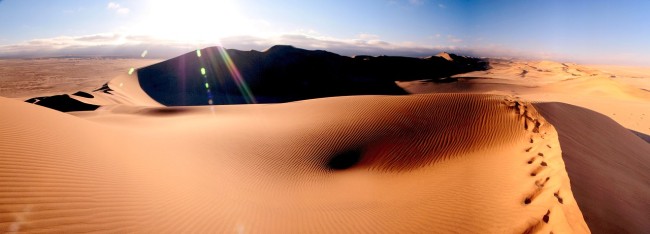
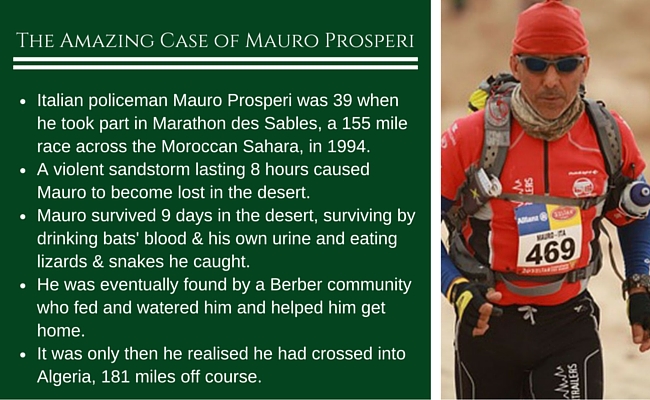
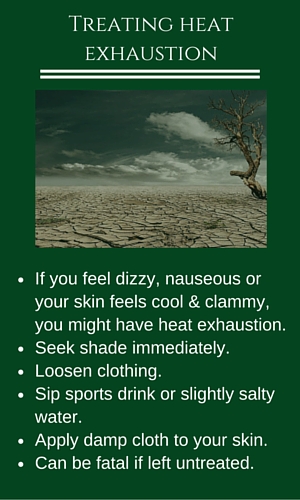 Travel at night if you can
Travel at night if you can